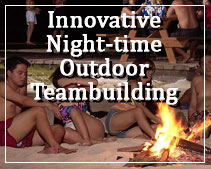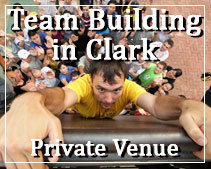About assisted living
Title: About assisted living
Date: 6th December, 2010 from Clearwater Resort Hotel Clark Pampanga, highly recommended beach resort for family and company outings, parties and events
Assisted living is more of a marketing term referring to a generalized care model then it is a specific form of care delivery. It is an attempt by the industry that offers these services to bring a disparate number of service providers under one umbrella.
Assisted living, also called residential care, is a type of living arrangement in which personal care services such as meals, housekeeping, transportation, and assistance with activities of daily living are available as needed. Also an important aspect of the assisted living model is to provide security, comfort and meaningful activities for residents. But unlike nursing homes, residents in assisted living remain independent, living on their own in a residential setting. Assistance with activities of daily living may include help with bathing, dressing, toileting, diapering, medicating, helping with daily living decisions and moving from one place to another.
The definition of the term assisted living and what it is called in licensing regulations vary from state to state. One of the reasons many terms exist for similar facilities is that each state has its own licensing requirements. Regulations to govern these facilities are not uniform. Allowable services also vary from state to state. Assisted living services allowed in one state may only be available in a nursing home in another state. Recently there is an effort among many state legislatures to unify assisted living licensing provisions based on a common model for all states.
Here are some examples of the titles states use for assisted living:
β’ Residential care
β’ Personal care
β’ Adult congregate living care
β’ Board and care
β’ Adult living facilitiesSupported care
β’ Enhanced care
β’ Adult homes
β’ Sheltered housing
β’ Retirement residences
β’ Adult foster care
β’ Community based retirement facilities
The difference in licensing is usually based on the size of the facility or the services it can offer.
For example, residential or board and care is usually a converted home or small facility with three to ten beds where the caregiver is a homeowner or single proprietor with little or no support staff. These facilities typically are not allowed to offer much care beyond bathing, dressing, providing meals or helping residents move around. Some of these homes however, may contract with home health agencies, home visiting doctors or nurses to provide care for their residents.
The cost for board and care homes is typically much less than with large, new, apartment-style assisted living facilities. People who operate board and care homes have a love for the elderly and in essence are taking these people into their homes to care for them as if they were family members. Unfortunately because of their small size these operations have little money to advertise and their residents usually come to them from referrals or word of mouth.
Assisted living fills a gap between home care and nursing homes. Years ago, before assisted living, a person needing professional care went to a nursing home even though the care didn’t always merit the intensive supervision and control of a nursing home. The fairly new alternative of assisted living provides a more homelike environment for people needing or anticipating help with activities of daily living or incidental activities of daily living but for which 24-hour nursing care is not a necessity.
Instead of the hospital environment of a nursing home, newer assisted living facilities look more like apartment buildings with private rooms or suites and locked doors. Instead of a nurses desk, there is a help desk. And instead of a hospital-like lounge area and sterile cafeteria, assisted living has gathering areas with couches, fireplaces, gardens, atriums, etc. Central dining areas look more like banquet rooms and often offer entertainment during or after mealtimes. Meaningful activities and chats with neighbors in pleasant surroundings, keep residents active and stimulated. Frequent outings are also planned. And transportation is available to residents who can’t drive.
Many assisted living facilities allow home health agencies to come in and offer services for residents. Some states may allow facilities to have a resident nurse or therapist to help with minor medical problems. And some states even allow variances for assisted living to offer limited nursing home services.
Some assisted living facilities specialize in the care of Alzheimer’s patients. An Alzheimer’s patient typically does not require a lot of medical attention but often requires supervision and confinement. Alzheimer’s facilities have locked entrance doors to prevent residents from wandering.
Prior to assisted living, many people had to reside in nursing homes but didn’t need the level of care provided. Yet there were few options for other living arrangements. With assisted living, these people now have the choice of a more homelike environment at about half the cost of a nursing home. Demonstrating the popularity of ALF’s over nursing homes is the fact that the number of nursing home beds in this country has increased only slightly over the last decade to about 1,800,000 beds, whereas assisted living beds have grown from about 600,000 to well over 2,000,000 beds over the same period.
Not all residents of ALF’s need significant care or assistance. Many are there because they want a simpler lifestyle without the worry of maintaining a home and they seek the companionship of other people their own age. They also may have chosen assisted living over an independent retirement community because they may need some minor help such as taking medications or they desire a secure environment or they may require some minor supervision. They may be able to get this help other places but they anticipate a time when they may need the more intensive care available only with an assisted living facility. Source for below: National Center for Assisted Living, 2001
If this article about Clark is useful to you, please click here to contact us to tell us what more you wish to know about this article or Clark Philippines, which can be something about Clark investment, about Clark resorts, about Clark Swimming and Leisure or simply general news about Clark.
Please send questions to Editor@ClarkPhilippines.com. Leave your name, email address, contact numbers and we will get back to you as soon as possible. Information received will not be disclosed.













